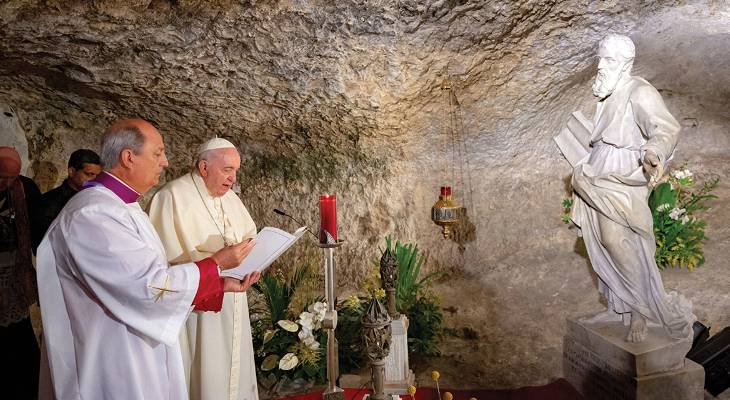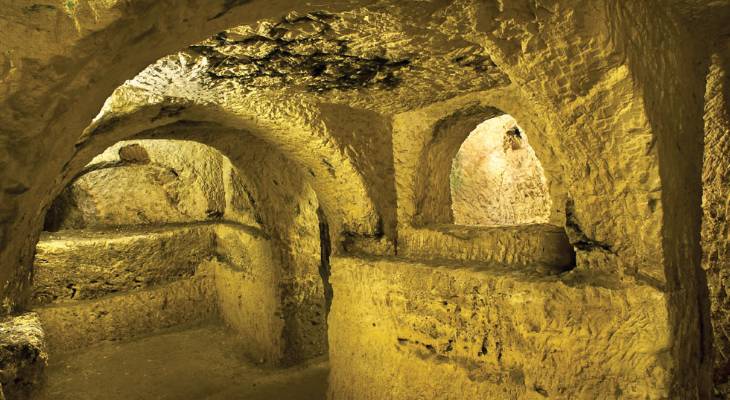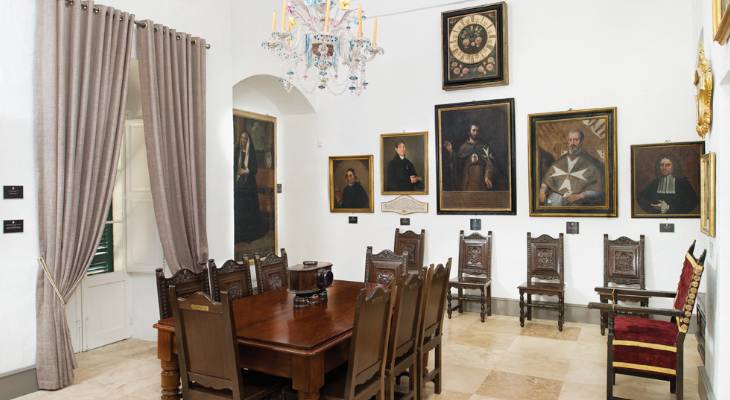Once home to the Knights’ Chaplains, the Wignacourt Museum in Rabat offers a rich glimpse into Malta’s religious, artistic, and wartime past – all centered around a sacred Christian site.
The Wignacourt Museum in Rabat was originally the Baroque residence of the Chaplains of the Knights of St John, built under the reign of Grand Master Aloph de Wignacourt (1601-1622). It forms part of a Pauline complex, as it was designed with a direct passage to St Paul’s Grotto – the cradle of Christianity in Malta.
The grotto is the place where St Paul is believed to have founded the island’s first Christian community. He was shipwrecked in Malta in 60AD while travelling from Crete to Rome to stand trial before Emperor Nero. During his three-month stay, St Paul is said to have lived in this underground cave, located in the ditch of the Roman city of Melite. It is from here that he preached and spread the word of God, thus introducing Christianity to Malta. As a result, the grotto became an important site of worship and pilgrimage. Over the centuries, many notable figures visited the site, including Pope John Paul II, Pope Benedict XVI, Pope Francis, Inquisitor Fabio Chigi (later Pope Alexander VII), Lord Admiral Nelson, and several others.

Ian Noel Pace – Papal Media
The building, fully completed in 1749, spans three levels. The underground level consists of a labyrinth of Punic, Roman and Christian Hypogea, featuring intriguing architectural elements. As burials were carried out outside city walls for hygienic reasons, this area of catacombs includes a variety of tomb types, such as saddle-backed baldacchino tombs, window tombs, troughless baldacchino tombs, and small loculi. One particularly rare feature is a small agape table, likely positioned near an entrance. These unique tables were used for ritual meals, which resembled celebrations following a burial.
This subterranean complex also includes World War II shelters, comprising two main corridors and around 50 rooms. With the onset of hostilities during World War II, shelters were urgently needed for both Rabat residents and refugees from across the island. The government allocated the main corridors, while families paid to have private rooms dug with pickaxes. These rooms remain numbered, and many still show indentations in the walls where simple oil lamps were placed, as electricity was not yet available.

The museum’s ground floor consists of a corridor with several rooms on one side – used as minor and service rooms during the time of the Knights of St John. Today, most of these rooms are used as offices, while others house part of the museum’s collections. On the opposite side is a spacious garden, currently home to a restaurant. Nearby is an area that formerly included the refectory of the Chaplains of the Order and an oven, which during World War II provided more than 2,000 loaves of bread for the people of Rabat. The corridor has since been repurposed to host exhibitions, workshops and various artistic events.

The first floor, once the living quarters or piano nobile of the Chaplains, now houses an impressive picture gallery featuring works by Mattia Preti, Antoine Favray, Francesco Zahra, and other Maltese and European artists.
The museum also boasts a collection of 17th- and 19th-century Spanish, Italian and Maltese silver; a unique wooden altar used for celebrating Mass aboard the galleys of the Order of the Knights of St John; a collection of old relics and reliquaries, sculptures in alabaster and bronze, including a medallion by Alessandro Algardi; as well as maps, coins, prints, and rare books. The centrepiece of the first floor is the Baroque chapel, used in the past for the private devotion of the residing Chaplains.
Whether your interest lies in religion, history, art, architecture, or archaeology, you’ll find something fascinating within the Wignacourt Museum complex.
This article first appeared on Guide Me 2025.